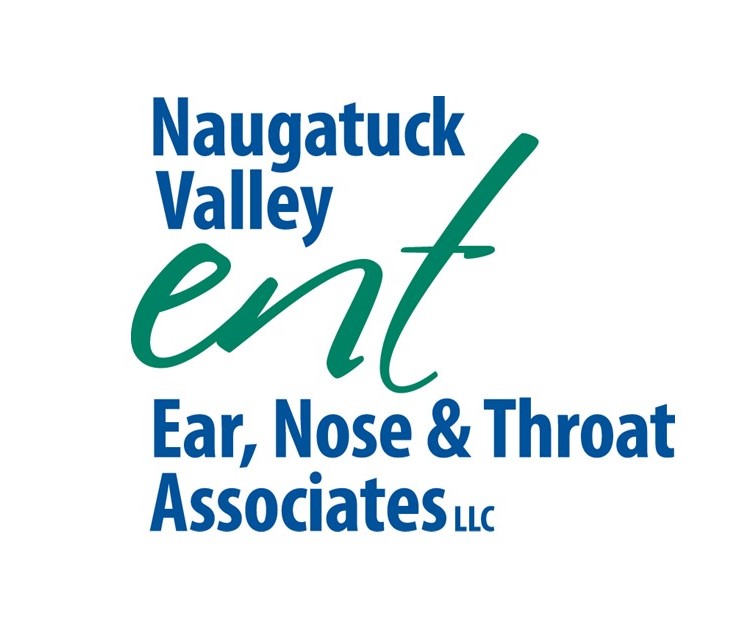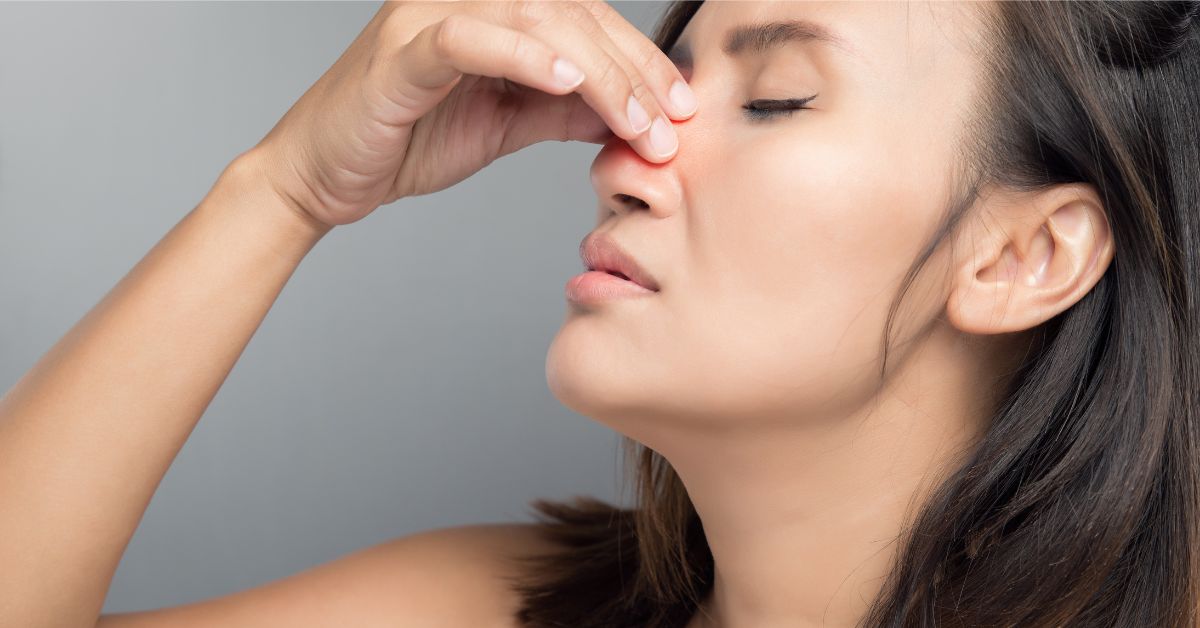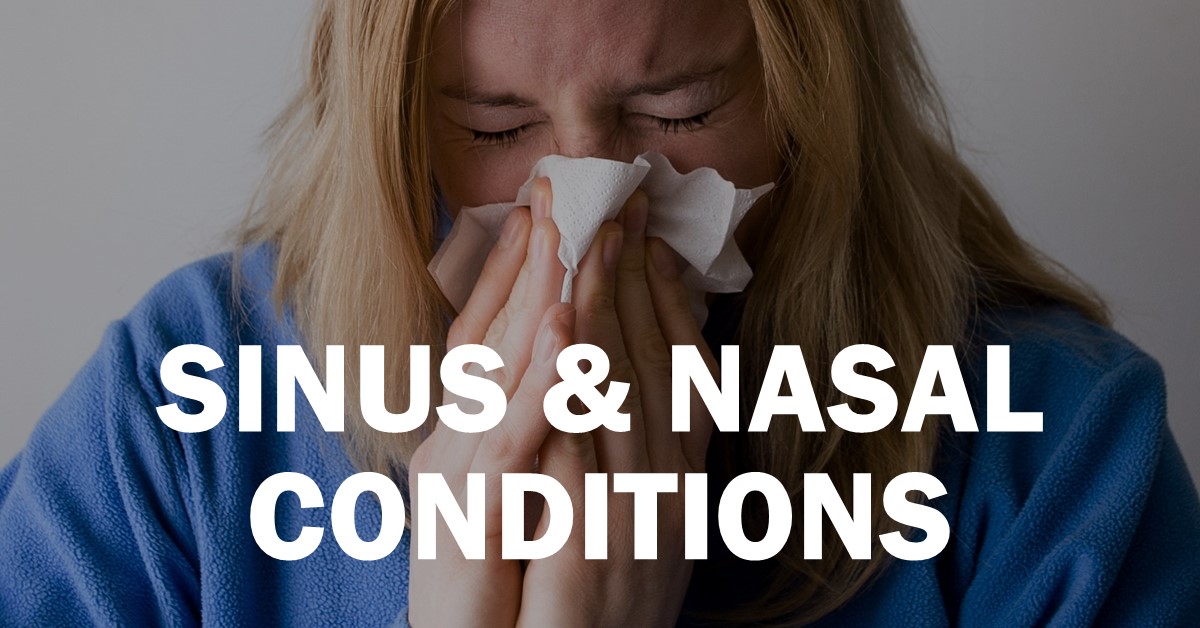Turbinate Hypertrophy
Turbinate hypertrophy refers to an excessive growth or enlargement of the turbinates, which are bony structures located inside the nose. They are covered with a special skin called mucosa, and they help filter, warm, and humidify the air as you breathe.
The mucosa naturally swells during the normal nasal cycle and when you lie down. They also swell in response to allergens and other stimuli.
The nasal cavity usually contains three sets of turbinates on each side of the nose: the superior turbinates, the middle turbinates, and the inferior turbinates. Most of the airflow in the nose passes between the middle and inferior turbinates. If these turbinates become enlarged, breathing can become more difficult.
What Are the Symptoms of Turbinate Hypertrophy?
The most common symptoms of turbinate hypertrophy include:
- Difficulty breathing
- Congestion in alternating sides of the nose
- Nasal stuffiness
- Nasal blockage
- Nasal congestion while lying down
- Noisy breathing or breathing through the mouth during sleep
- Increased nasal drainage
What Causes Turbinate Hypertrophy?
Turbinate hypertrophy is typically caused when the lining of the skin covering the turbinate bone becomes enlarged and swollen. This can be an acute (one time) or chronic (ongoing) problem, and can be caused by many conditions including:
- Upper respiratory infection, or the common cold
- Acute sinus infection
- Allergic rhinitis
- Non-allergic rhinitis
- Chronic rhinosinusitis
- Medications
- Hormonal changes
How We Can Help
Our noses facilitate breathing by helping to keep out potentially harmful dirt, allergens, and other agents. Our noses and sinuses can become infected or inflamed making breathing uncomfortable or difficult. Naugatuck Valley ENT can treat your sinus and nasal conditions including deviated septum, rhinitis, sinusitis, sinus headaches and migraines, nasal obstruction and surgery, and more. Please contact Naugatuck Valley ENT at (203) 578-4630 to set up an appointment.
Other related factors or conditions that can cause nasal blockage include a deviated septum, nasal valve collapse, and external nasal deformity, or other kind of sinus disease.
What Are the Treatment Options?
Treating turbinate hypertrophy depends on the specific cause. First, discuss your symptoms with your primary care physician or an ENT (ear, nose, and throat) specialist, or otolaryngologist. They will examine your nose and may recommend additional tests, such as allergy testing or X-rays, depending on your specific diagnosis.
Medical therapy—Medications are often suggested to help reduce symptoms. Depending on the specific cause of the turbinate hypertrophy, possible medications include:
- Nasal saline sprays or rinses
- Nasal antihistamine sprays
- Nasal steroid sprays
- Allergy immunotherapy
For an acute case of turbinate hypertrophy, nasal decongestant sprays (such as Oxymetazoline) should only be used for a very brief period. This is not an appropriate treatment for chronic turbinate hypertrophy. Using nasal decongestant sprays for longer than three days can result in additional swelling in the nasal cavity, worsening symptoms, and addiction with prolonged use.
Surgery—If medications do not help improve your symptoms, your ENT specialist may offer a surgical procedure to decrease the size of the turbinates. This procedure is usually performed through the nostrils and does not result in bruising or an outward sign of surgery.
The goal of surgery is to decrease the size of the turbinate to improve airflow through the nose while preserving the function of the turbinate. There are many different types of surgical procedures to reduce the size of the turbinates, and will depend on your specific diagnosis, the severity of the turbinate hypertrophy, and your ENT specialist’s recommendation. Many of these procedures can be done in the office using specialized devices that can reduce the size of the turbinates while leaving the special skin (mucosa) intact.
Surgery can usually be performed under local or general anesthesia as an outpatient procedure, and may be combined with other procedures to reduce nasal obstruction. The most common associated procedure is called a septoplasty to address a deviated septum.
Complications from turbinate surgery are rare but can include:
- Anesthesia complications
- Pain
- Swelling
- Bleeding
- Infection
- Dryness and crusting inside the nasal cavity
- Regrowth of the turbinate swelling and recurrent nasal congestion
Empty nose syndrome (ENS) is an unusual condition that can occur after turbinate surgery, and is usually associated with significant resection of the turbinates. In this condition, the nose continues to feel congested and obstructed despite the nasal passage being opened after surgery. This is an extremely rare condition and not completely well understood; if you have concerns about having or developing ENS, discuss this with your ENT specialist.
What Questions Should I Ask My Doctor?
- What is the most likely cause of my turbinate hypertrophy?
- Which medications are best suited to treat my turbinate hypertrophy?
- Are there any other conditions that could be contributing to my nasal congestion?
- Should I have any other evaluations? Allergy testing? Consultations with other specialists?
Copyright 2022. American Academy of Otolaryngology–Head and Neck Surgery Foundation. Last reviewed November 2019.


